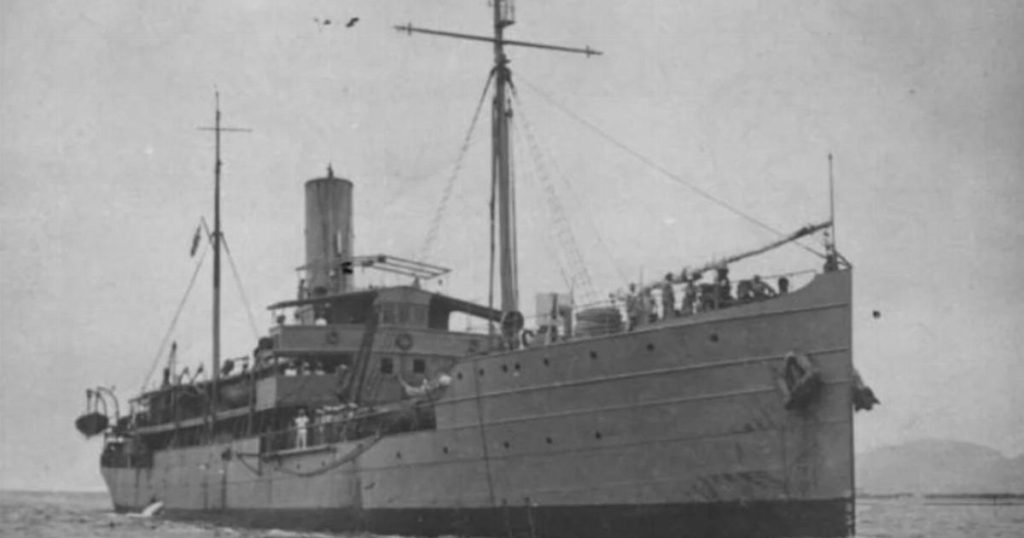The Unforeseen Discovery: A Fisherman’s Snag Unveils a WWII Tragedy
In the annals of maritime history, shipwrecks often hold a captivating allure, whispering tales of bygone eras and echoing the echoes of forgotten tragedies. The discovery of the Brazilian Navy ship "Vital de Oliveira," sunk during World War II, stands as a testament to the enduring power of chance encounters and the persistent pursuit of historical truth. What began as a seemingly mundane call for assistance from a distressed fisherman transformed into a remarkable revelation, unearthing a piece of Brazil’s wartime past that had long remained shrouded in mystery.
The story unfolds with the serendipitous entanglement of a fishing net, an event that would set in motion a chain of events leading to the rediscovery of a lost warship. Two brothers, Jose Luíz and Everaldo Popermeyer Meriguete, received a call from a local fisherman seeking help with a snagged net. Unable to resolve the issue themselves, they enlisted the aid of their friend, experienced deep-sea diver Domingos Afonso Jório. Descending into the depths, Jório made a startling discovery – the net was not caught on rocks or debris, but on a cannon, a relic of a long-lost vessel.
Recognizing the potential historical significance of their find, the brothers promptly reported the discovery to the Brazilian Navy in 2011. However, years passed without any apparent follow-up, leaving the fate of the sunken ship uncertain. Finally, in 2023, the Brazilian Navy confirmed that the wreckage of the "Vital de Oliveira" had been definitively located using advanced sonar imaging technology.
Advanced Technology Brings Clarity to the Depths: Mapping the "Vital de Oliveira"
The confirmation of the ship’s identity and location was made possible through the utilization of sophisticated sonar technology. A multibeam echo sounder and side scan sonar were deployed to meticulously map the ocean floor, creating detailed three-dimensional models of the submerged wreckage. This advanced imaging process allowed for precise identification of the ship’s hull, confirming that it was indeed the "Vital de Oliveira," a vessel that had met its tragic end during the tumultuous years of World War II.
The "Vital de Oliveira" was built in 1910 and subsequently incorporated into the Brazilian Navy in 1931. It served faithfully for over a decade, primarily transporting military personnel and supplies along the Brazilian coast. However, its service was abruptly cut short on the night of July 19, 1944, when it was attacked and sunk by a German U-boat, U-861, becoming the only Brazilian military ship lost to enemy action during the war. The tragic sinking claimed the lives of over 100 Brazilian soldiers.
The discovery of the "Vital de Oliveira" serves as a poignant reminder of the sacrifices made during wartime and the enduring legacy of those lost at sea. It also underscores the importance of preserving and understanding our history, even in the depths of the ocean. This rediscovery provides a tangible link to the past, allowing us to reflect on the human cost of conflict and honor the memory of those who perished.
A Window into the Past: The Significance of the "Vital de Oliveira" Discovery
The "Vital de Oliveira" represents more than just a sunken ship; it symbolizes a significant chapter in Brazil’s wartime history. Its sinking stands as a stark reminder of the global reach of World War II and the impact it had even on nations seemingly far removed from the major theaters of conflict. The ship’s loss underscored the vulnerability of Brazil’s coastline and the ever-present threat posed by enemy submarines.
The rediscovery of the wreckage offers a unique opportunity for historians and researchers to gain deeper insights into the events surrounding the ship’s sinking. Further investigation of the site could reveal details about the attack, the condition of the ship at the time of its demise, and potentially even personal belongings of the crew members who perished. Such discoveries can provide invaluable context to historical accounts and help paint a more complete picture of this tragic event.
Beyond its historical significance, the discovery also highlights the increasing role of technology in archaeological exploration, particularly in underwater environments. The advanced sonar technology used to locate and identify the "Vital de Oliveira" demonstrates the power of these tools to uncover hidden remnants of the past, opening doors to new discoveries and enriching our understanding of history.
Exploring the Depths: Unveiling the Secrets of Brazil’s Underwater Heritage
The waters off the coast of Brazil are a veritable graveyard of shipwrecks, with over 500 vessels from the World War II era alone resting on the seabed. These sunken remnants of the past hold a wealth of historical information, waiting to be discovered and interpreted. The "Vital de Oliveira" is just one piece of this larger puzzle, a reminder of the vast untapped potential for underwater archaeological exploration in the region.
The increasing utilization of sonar technology is revolutionizing the field of underwater archaeology, enabling researchers to locate and identify shipwrecks with unprecedented precision. These advancements are not only helping to uncover lost vessels but also providing valuable data on the condition of the wrecks, the surrounding marine environment, and the potential for further exploration. As technology continues to evolve, we can expect even more discoveries like the "Vital de Oliveira," revealing hidden chapters of history and enriching our understanding of the past.
Preserving the Past: Protecting Brazil’s Underwater Cultural Heritage
The discovery of the "Vital de Oliveira" underscores the importance of preserving underwater cultural heritage. Shipwrecks like this one are not just remnants of past conflicts; they are time capsules, offering glimpses into the lives of the people who sailed aboard them and the historical context in which they existed. Protecting these sites from looting, damage, and environmental degradation is crucial to preserving their historical value for future generations.
The Brazilian Navy’s confirmation of the "Vital de Oliveira’s" location highlights the importance of collaboration between government agencies, researchers, and local communities in protecting underwater cultural heritage. By working together, we can ensure that these valuable historical resources are preserved and studied responsibly, contributing to a deeper understanding of our shared past.
The Legacy of the "Vital de Oliveira": A Symbol of Sacrifice and Remembrance
The story of the "Vital de Oliveira" is a testament to the power of chance encounters and the enduring pursuit of historical truth. From a fisherman’s snagged net to the deployment of advanced sonar technology, a series of seemingly unrelated events converged to reveal a lost piece of Brazil’s wartime past. The rediscovery of this sunken warship offers a poignant opportunity to reflect on the sacrifices made during World War II and to honor the memory of those who perished. It also serves as a reminder of the vast untapped potential for underwater archaeological exploration and the importance of preserving our shared cultural heritage.











